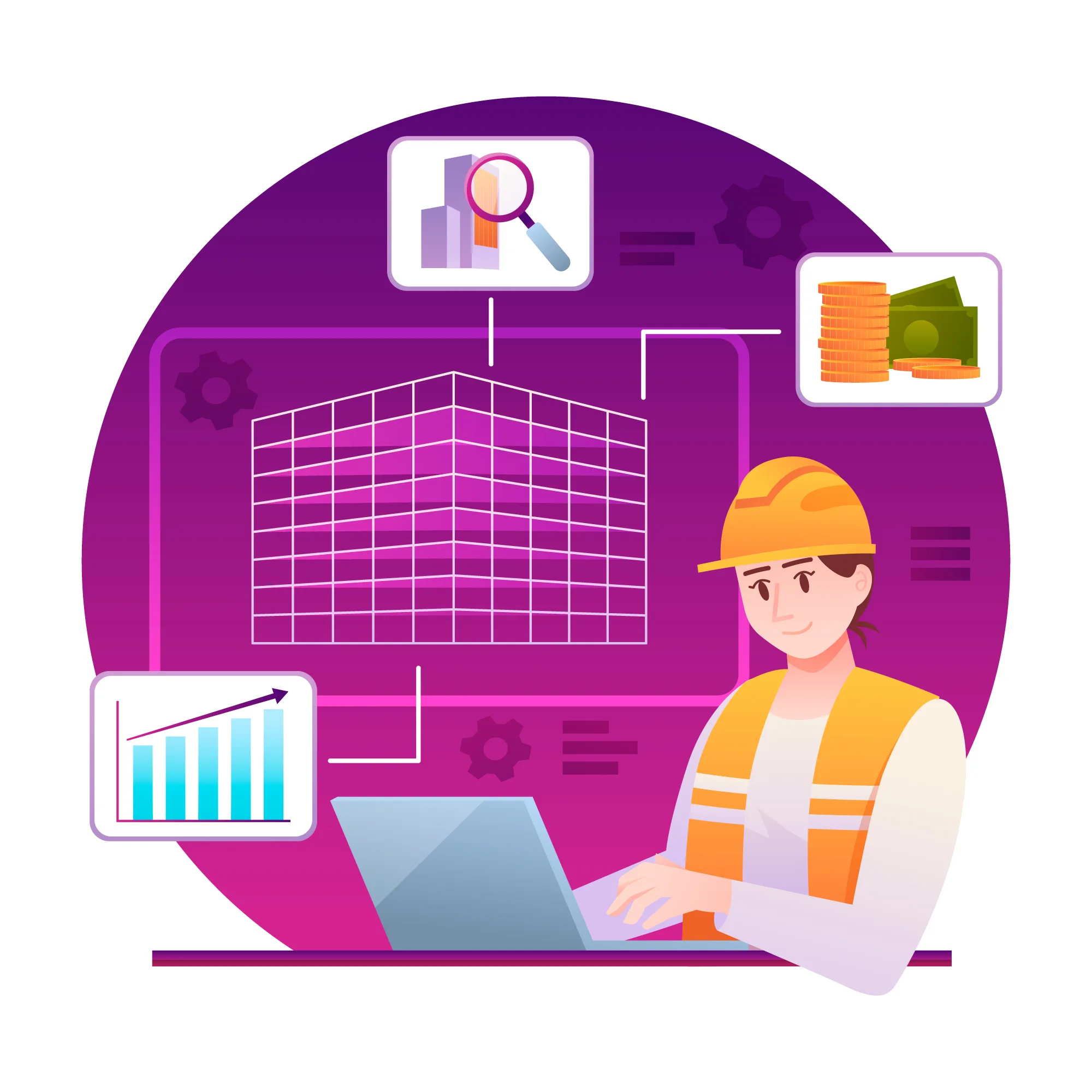
Bridge Engineering: Strategies for Uncertainty Data Management
In the world of bridge engineering, the phrase “uncertain data” can send shivers down the spines of even the most experienced professionals. The construction industry has always been fraught with unpredictabilities, but in today’s digital age, managing uncertain bridge engineering data has become both a challenge and an opportunity. In this extensive article, we’ll explore the intricacies of handling this issue, providing insights, strategies, and solutions for bridge engineers in the AEC industry.
Understanding the Challenge
Bridge engineering is a complex field where precision is paramount. However, real-world factors such as changing weather conditions, geological shifts, and unforeseen structural issues can introduce uncertainty into our projects. The AEC industry often grapples with managing this uncertainty, especially in data-driven decision-making processes.
The Core of the Problem
The heart of the matter lies in data. Bridge engineering projects generate vast amounts of data, including geospatial information, structural specifications, and construction progress reports. In this digital age, this data is essential for optimizing designs, predicting potential issues, and ensuring the safety and longevity of bridges.
However, the uncertainty creeps in when this data is incomplete, outdated, or unreliable. This can lead to costly delays, compromised safety, and decreased project efficiency.

Strategies for Managing Uncertain Bridge Engineering Data
1. Data Collection and Validation:
The first step in managing uncertain data is to ensure that the data collected is accurate and up-to-date. Utilize advanced surveying techniques, such as LiDAR scanning and drones, to capture high-resolution data. Additionally, implement strict quality control measures to validate and verify the collected data.
High-quality data is the foundation upon which successful bridge engineering projects are built. It’s essential to invest time and resources in collecting data that can be trusted. With the advent of advanced surveying technologies like LiDAR and the use of drones, we now have access to high-resolution data that can provide us with a much clearer picture of the project site. However, collecting data is just the beginning; ensuring its accuracy and reliability is equally crucial. This involves implementing stringent quality control measures to validate and verify the collected data. By starting with accurate data, we can significantly reduce uncertainty in our projects.
2. Data Fusion:
To mitigate uncertainty, bridge engineers should leverage multiple data sources. Combine traditional survey data with remote sensing technologies, satellite imagery, and historical data to create a comprehensive dataset. This fusion of data sources helps in cross-verification and reducing the impact of uncertain information.
In today’s digital age, we have a wealth of data sources at our disposal. By integrating traditional survey data with advanced remote sensing technologies like satellite imagery, we can create a comprehensive dataset that offers a more holistic view of the project site. This multi-sourced approach allows us to cross-verify data, reducing the impact of uncertainty and providing a more accurate foundation for our engineering decisions.
3. Advanced Modeling and Simulation:
Employ advanced software and modeling techniques to simulate various scenarios. This allows for a better understanding of how uncertain factors might impact the bridge’s performance. Finite element analysis, for instance, can help predict structural behavior under different conditions.
Modeling and simulation have revolutionized the field of bridge engineering. Advanced software and modeling techniques enable us to simulate various scenarios, helping us gain a better understanding of how uncertain factors might impact a bridge’s performance. For example, SOFiSTiK’s finite element analysis allows us to predict the structural behavior of a bridge under different conditions, providing valuable insights that can inform our design and construction decisions.
4. Real-time Monitoring:
Implement real-time monitoring systems during the construction phase. These systems provide continuous data updates, allowing engineers to respond swiftly to unforeseen developments. For instance, monitoring equipment can detect shifts in bridge piers or unusual loads in real-time.
Real-time monitoring is a game-changer in bridge engineering. By installing monitoring systems during the construction phase, we can continuously track the bridge’s performance and receive real-time data updates. This proactive approach enables us to respond swiftly to unforeseen developments, such as shifts in bridge piers or unusual loads. It’s like having a constant watchful eye on the project, ensuring that any issues are addressed promptly.
5. Machine Learning and AI:
Harness the power of artificial intelligence and machine learning algorithms to predict potential issues based on historical data. These technologies can help bridge engineers make informed decisions and adapt to changing circumstances.
Artificial intelligence and machine learning are transforming the way we handle uncertain data in bridge engineering. By analyzing historical data, these technologies can predict potential issues and trends, allowing us to make informed decisions and adapt to changing circumstances. For example, AI algorithms can identify patterns in data that human analysts might miss, helping us proactively address potential risks.
6. Collaborative Platforms:
Utilize collaborative platforms that allow multidisciplinary teams to share data and insights seamlessly. This fosters communication and coordination among stakeholders, enabling quicker response to uncertainties.
Collaboration is key to managing uncertain data effectively. Utilizing collaborative platforms that enable multidisciplinary teams to share data and insights seamlessly is essential. This fosters communication and coordination among stakeholders, ensuring that everyone is on the same page when it comes to managing uncertainty. With the right collaborative tools, we can respond more quickly and effectively to uncertainties as they arise.
7. Risk Management:
Develop comprehensive risk management strategies that consider uncertainties as integral components. Identify potential risks and formulate contingency plans to minimize their impact on project timelines and budgets.
Risk management is a critical aspect of handling uncertain data. It involves developing comprehensive strategies that treat uncertainties as integral components of a project. By identifying potential risks and formulating contingency plans, we can minimize the impact of uncertainty on project timelines and budgets. In essence, risk management is about being prepared for the unexpected and having a plan in place to address uncertainties when they arise.
8. Continuous Learning and Training:
Bridge engineers should stay updated with the latest technologies and industry best practices. Continuous learning and training help professionals adapt to evolving challenges and technologies in the AEC industry.
The AEC industry is constantly evolving, with new technologies and best practices emerging regularly. To effectively manage uncertain data, it’s crucial for bridge engineers to stay updated with the latest advancements. Continuous learning and training not only help professionals adapt to evolving challenges but also ensure that they are well-equipped to leverage the latest technologies and strategies in their projects. Investing in ongoing education is an investment in the future of bridge engineering.
Conclusion
In the dynamic world of bridge engineering, managing uncertain data is a critical skill. The AEC industry has witnessed remarkable advancements in data collection, analysis, and predictive modeling, offering bridge engineers a vast array of tools and strategies to tackle this challenge.
By embracing advanced technologies, fostering collaboration, and prioritizing risk management, bridge engineers can navigate the uncertain waters of bridge engineering data with confidence. Ultimately, these efforts contribute to the construction of safer, more efficient, and longer-lasting bridges, benefitting both engineers and the communities they serve. As construction specialists, it is our responsibility to harness these tools and knowledge to build a more resilient and sustainable future for our infrastructure.

